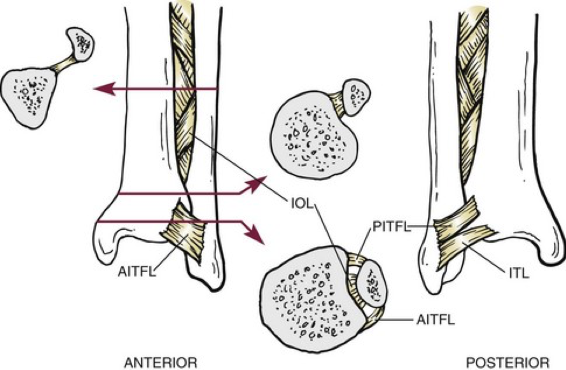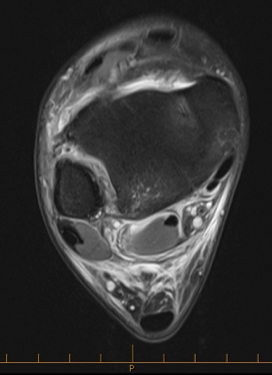What is Syndesmotic Instability?
A syndesmosis injury, ‘high ankle sprain’ occurs usually when the foot is twisted and rotated outwards.
The ankle is formed by the Tibia and Fibula bones, held by ligaments termed the Anterior Inferior Tibiofibular Ligament AITFL, and the Posterior Inferior tibiofibular ligamen PITFL.
Once these ligments are damaged instability can develop in the Ankle Joint.
Some patients have syndesmosis injuries which need immediate surgical management. In other patients a chronic instability develops, and common complaints include pain on twisting, pivoting, stairs and an inability to return to the previous level of sport. Commonly patients present after 2-3 months of physical rehabilitation with minimal improvement.
An MRI scan is helpful to confirm the ligament injury and to assess the joint cartilage. A weight bearing CT scan can assess the degree of instability between the 2 ankle bones, and determine which patients would benefit from surgical intervention.



Treatment options range from non-operative to operative.

NON-OPERATIVE MANAGEMENT
A stable sprain can be managed with taping, and physiotherapy to strengthen the muscles that support the ankle. Recovery can be prolonged in Syndesmosis sprains, commonly taking over 3 months to return to sport and activity.
OPERATIVE MANAGEMENT
Surgery is indicated in acute cases if there is a significant injury on the MRI, or the Weight Bearing CT shows instability. In chronic cases it is indicated when conservative therapy fails.
Modern reconstruction techniques allow full weight bearing and early strengthening and range of motion. A focused rehabilation program commences from 2 weeks. A good outcome is achieved in over 90% of cases with walking at 2 weeks and return to sports from 8 to 12 weeks
